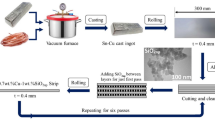Copper-phosphorus solders in the form of ribbons with a phosphorus content of 5–8%, thickness of 0.2–1 mm, and width of 10–20 mm are widely used to secure windings and contacts in electrical machinery. Certain alloys which are based on the copper–phosphorus system and contain a nickel addition are made in the form of ribbons that are in the amorphous state and are less than 100 μm thick. They are used to solder copper alloys in high-precision assembly work. Since the processing properties of copper-phosphorus solders are usually equivalent to those of solders that contain silver, they are used in place of silver-bearing solders as long as the finished joints have the required service characteristics. One serious drawback of copper-phosphorus solders is the difficulty in shaping them, which is due to the presence of brittle copper phosphide in the structure (this phosphide can account for up to 50% of the volume of the solder in some cases). Some factories fill their own needs for solder by turning heated cylindrical ingots on a lathe to make chip-shaped ribbons thinner than 1 mm. Such a technology is obviously unsuited for industrial use. Thus, in international practice copper-phosphorus alloys are made either by hot deformation or by casting a melt on a rotating mold. To more thoroughly investigate copper-phosphorus solders and the entire process of making them by feeding a melt laterally onto a rotating roller mold, tests were performed with the use of different speeds of rotation of the mold. The speed of the mold affects the geometric parameters and structure of ribbons based on alloy PMF7. The results of the tests are reported in this article.







Similar content being viewed by others
References
V. A. Vasil’ev, B. S Mitin, I. N. Pashkov, et al., High-Speed Melt Solidification (theory, technology, and materials), Intermet Inzhiniring, Moscow (1998).
E. Germann, Continuous Casting, Metallurgizdat, Moscow (1961).
A. I. Veinik, Permanent Molds, Nauka i Tekhnika, Minsk (1972).
A. I. Veinik, Approximate Calculation of Heat-Transfer Processes, Gosenergoizdat, Moscow-Leningrad (1959).
G. F. Balandin, Freeze Casting, Mashgiz, Moscow (1962).
B. V. Deryagin and S. M. Levi, Physicochemical Application of Thin Layers to a Moving Substrate, Izd. AN SSSR, Moscow (1959).
Author information
Authors and Affiliations
Corresponding author
Additional information
Translated from Metallurg, No. 9, pp. 92–97, September, 2015.
Rights and permissions
About this article
Cite this article
Tavolzhanskii, S.A., Pashkov, I.N. & Aleksanyan, G.A. Analysis of the Production of Ribbons of Copper-Phosphorus Solder by the Lateral Flow of a Melt onto a Rotating Roller Mold. Metallurgist 59, 843–850 (2016). https://doi.org/10.1007/s11015-016-0182-1
Received:
Published:
Issue Date:
DOI: https://doi.org/10.1007/s11015-016-0182-1




